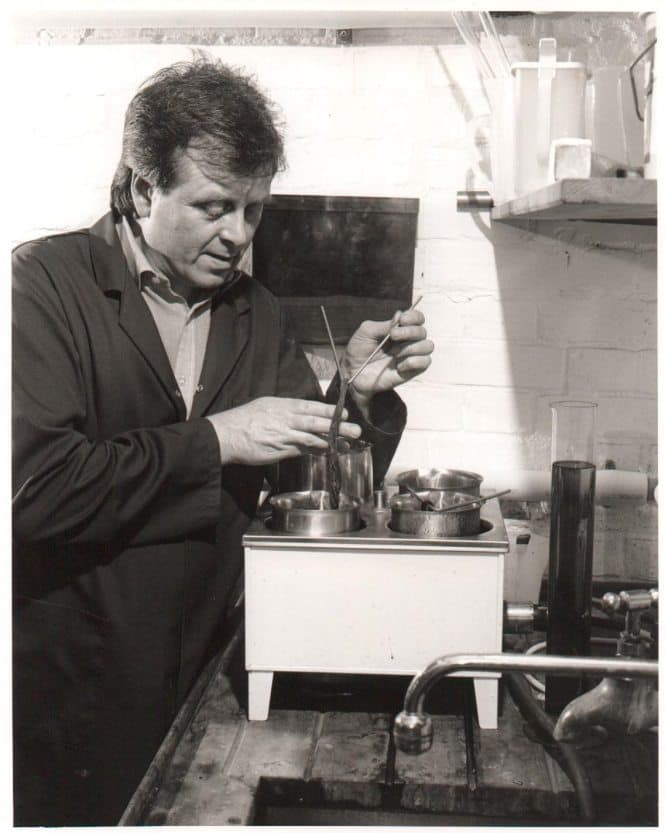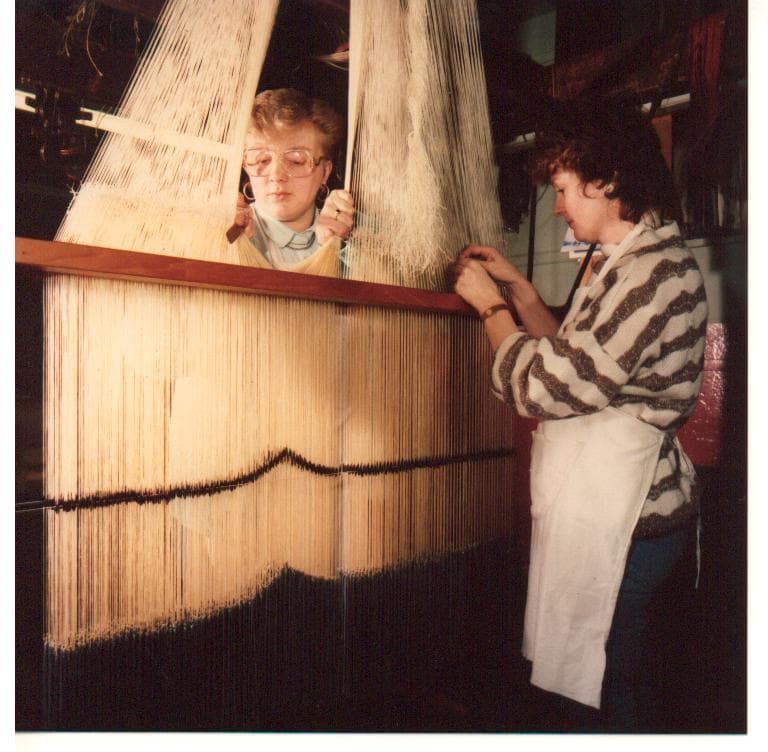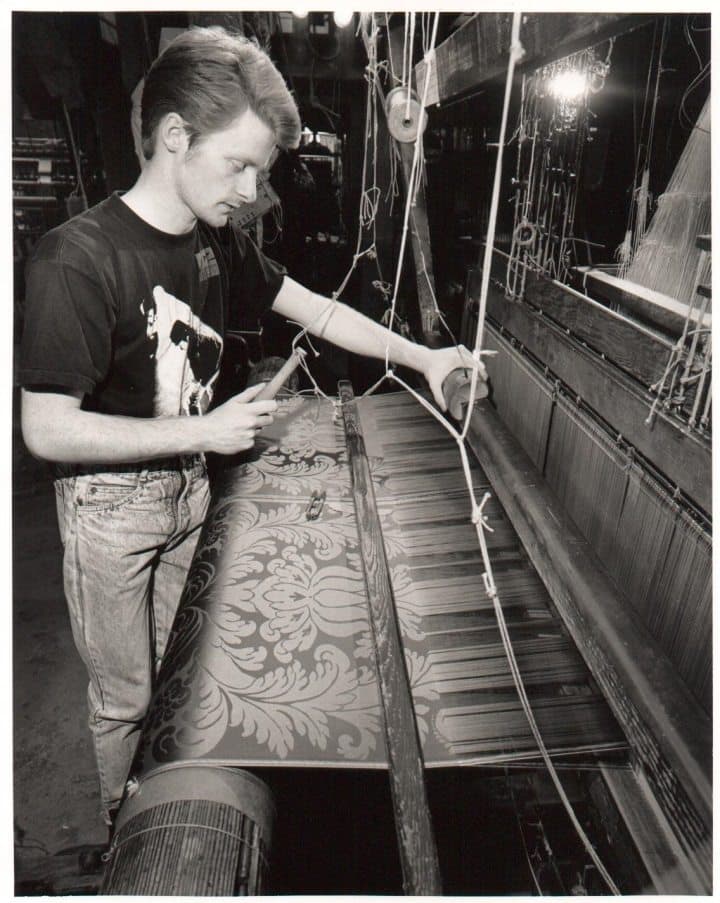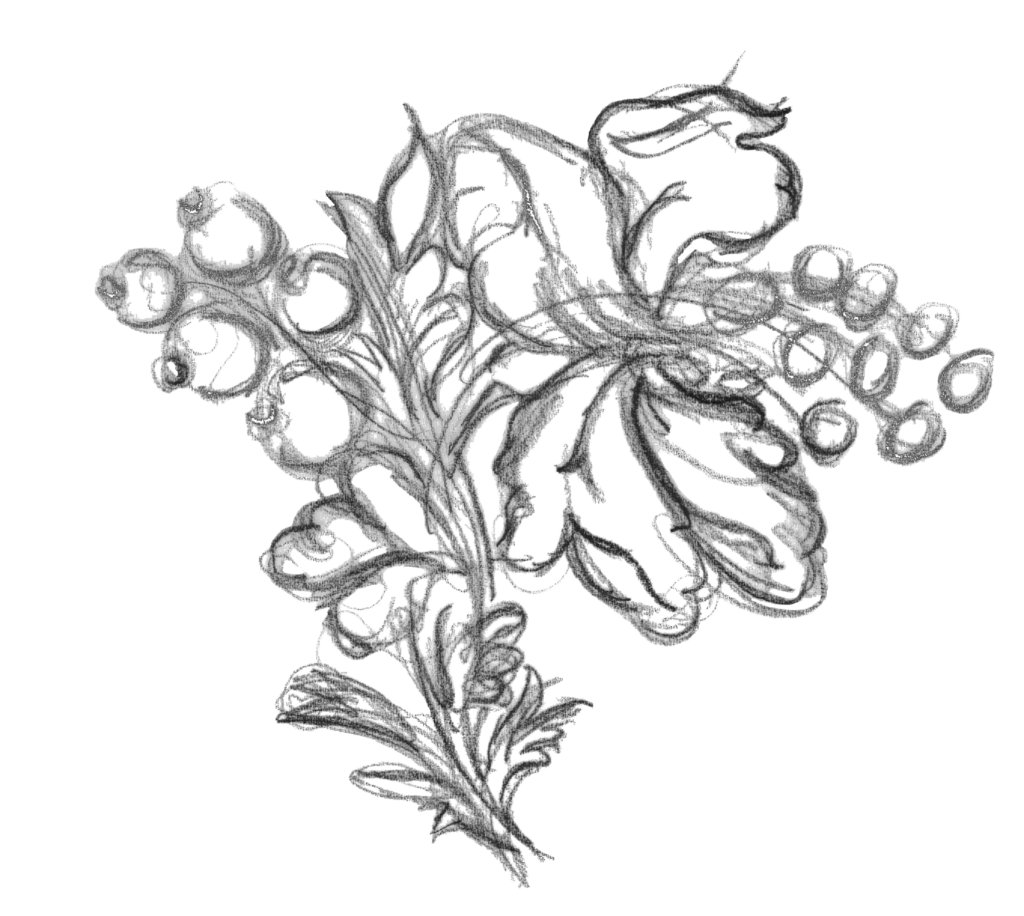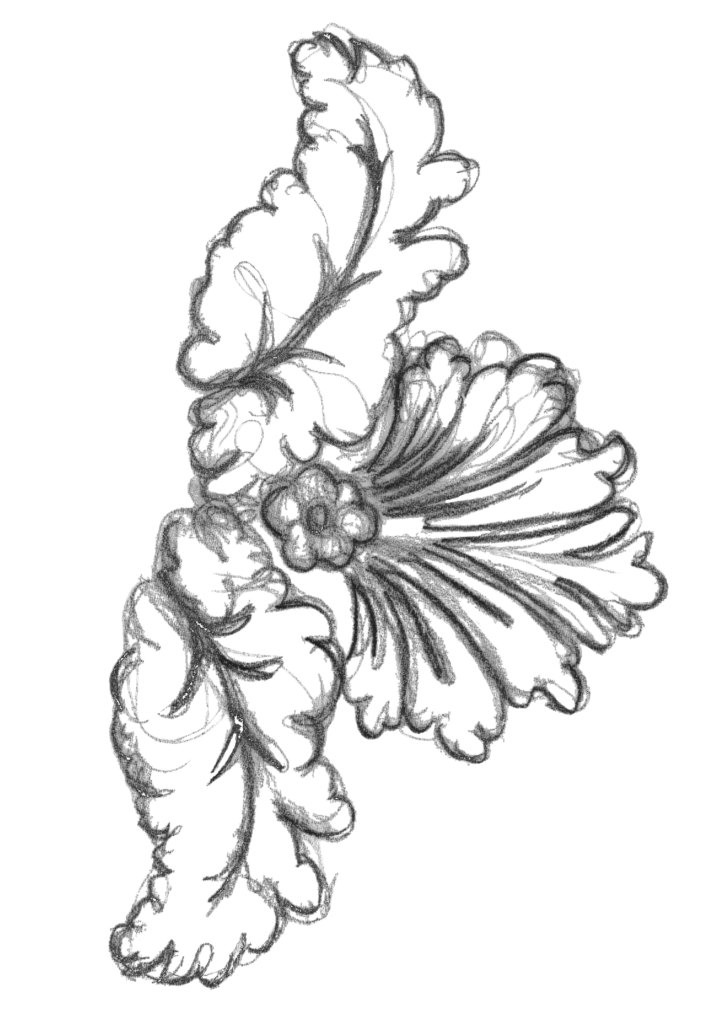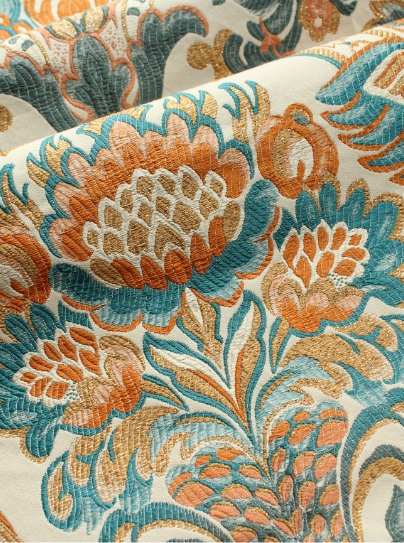Hampton Court Palace Fire 1986
This year marks the 30th anniversary of the fatal Hampton Court Palace fire that took place on Easter day in March of 1986 when a large part of the building was destroyed by fire which took 120 fire fighters to bring the blaze under control. The victim was Widow Lady Daphne Gale who was housed in rooms above the Kings apartments where the blaze started. There were acts of heroism on the day of the fire as works of art were snatched away from the inferno.
Buried among the debris was the Canopy of State which was covered in the original crimson silk damask. After the devastation which gutted whole sections of the state rooms, the restoration begun. Prior to the fire, Humphries Weaving had been involved in the reweaving of wall coverings. Bed drapes and upholstery for restoration programme of the Palace.
The fire did give an opportunity for a full review of the restoration programme and the newly appointed Dr. Simon Thurley who was responsible for the massive rebuilding task. The spring of 1986 had seen the reweaving of crimson silk lustring’s in pure silk for Queen Mary’s Closet. These widow drapes fortunately had not been installed when the fire occurred. Following the fire the planning of the textile restoration got underway and despite the crashing to ground of the Canopy of State, the silk damask fragments lay intact for conservation.
The Canopy retained the original version of the Italian pattern favoured by King William III and it was decided to get the best possible rendition of the design, and so the canopy textile would be sent to Humphries Weaving, for drawing the cloth pattern. This was special to have such a historic document to view and access for quality of cloth. Restorations of the Palace damask before the fire, had been using at least three differing versions of the pattern. Here for the first time we were able to accurately copy the original line of the draw loom cloth from the 17th Century. Also in the very fine corner folds of the valance the beautiful crimson silk, left unseen for centuries still revealed the original colour. This became “Canopy Crimson” a reference that would be much referred to during the restoration. Humphries Weaving’s colourist Brian Underwood painstakingly created trial beaker dyeing’s for approval before bulk silk dyeing for the damask requirements.
As the amount of damage and lost textiles became evident it was clear that the special narrow width of damask would need a lot more time to create, and with only one loom suitable, timing would be critical to keep the restoration on schedule. To resolve the timing issue a newly built Jacquard Harness was built at deVere Mill, Castle Hedingham to weave the newly designed Canopy damask.
The damask was just one of twenty five commissions for the Royal Palace interior. Not only crimson but yellow and the purest of white in the richest of qualities were undertaken. The Re-opening of the Palace by HM Queen was a joyous occasion after such devastation and proved that the fabrics destroyed by fire could be remade today.
